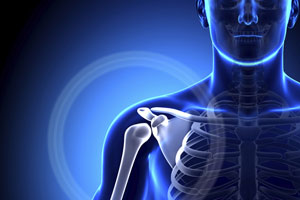
Question: How have you used fresh allografts in new or innovative ways?
Matthew Provencher, MD: Traditionally, fresh osteochondral allografts have been used in and around the knee joint. They were first described for use in the condyles of the knee, but the indications have since expanded due to additional allograft availability, improved instrumentation, and demonstration of good long-term outcomes. I’ve expanded the allograft technology to use in multiple other joints, such as using ankle allograft tissue for shoulder reconstructive procedures. For example, we were the first to describe the use of a fresh distal tibial allograft for reconstruction of glenoid bone defects. This has been done since 2008 with very promising results both clinically as well as healing on computed tomography scan demonstrating solid incorporation.
Due to the favorable clinical outcomes of fresh distal tibial allograft to the glenoid, we have also started to utilize fresh talus allograft for large Hill-Sachs lesions as well as reverse Hill-Sachs injuries. The reason for utilizing talar allograft for the humerus is: 1) we have shown that the talus fits well for both typical Hill-Sachs and reverse Hill-Sachs lesions; 2) the ready availability of talus grafts (sometimes within one to two weeks); and 3) no need for size matching, much like the fresh distal tibia, which is also not size matched. The talus has to be cut in a special manner in order to accommodate the correct sizing and fit for the Hill-Sachs. We have found that the curvature, as well as potential for cartilage restoration particularly beneficial, especially in the setting of a reverse Hill Sachs.
After doing the sizing and contouring work, we found you have to make cuts in the correct area to obtain a congruent fit between talus and humerus. The curvature matches very well and since the talus is comprised of dense corticocancellous bone, this incorporates well and is a robust construct. We also utilize headless compression screws to ensure that the graft is compressed well after final fit is obtained.
Full Article: How Innovative Fresh Osteochondral Allografts in Orthopedics Affect Patient Care